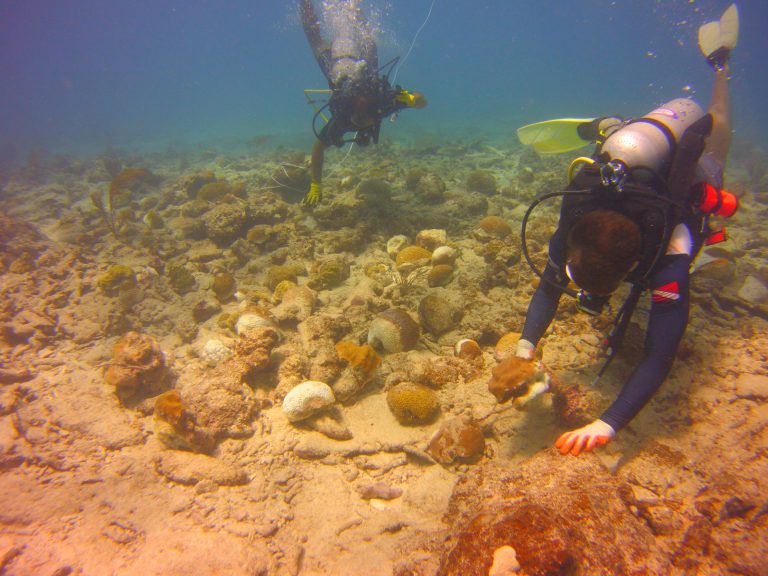
In 2017, coral reefs buffered Florida and Puerto Rico from Hurricanes Irma and Maria, but were severely damaged by the storm surge and waves. NOAA, the U.S. Geological Survey (USGS), and the University of California Santa Cruz (UCSC) have released three new reports that quantify the long-term consequences of these storms, putting a dollar value on increased flood risk resulting from damage to natural infrastructure.
Immediately following the hurricanes, NOAA and partners surveyed the storm damage to coral reefs. USGS and UCSC used the results of these surveys to quantify the increased flood risk to people and property in Florida and Puerto Rico as a result of damage to the reefs.
The first report quantifies how the damage to natural infrastructure from hurricanes Irma and Maria has increased coastal flood risk in Florida and Puerto Rico. Storm damage to these reefs was found to increase flood risk by more than $180 million annually.
The second report examines patterns of reef loss across south Florida and estimates how flood risk will grow as reefs degrade. By 2100, the size of the 100-year floodplain is projected to increase by 16 percent and flood risk will increase by $1 billion every year (in 2021 dollars) from just reef loss alone.
In the third report the authors show that coral reef restoration across Florida and Puerto Rico could prevent over $270 million annually in economic damages from flooding, and identify the locations where reef restoration would provide the greatest benefit.
These reports highlight the value of collaborative science and its relevance to decisions in policy, practice, and business (e.g., insurance) for protecting and restoring coral reefs and other natural coastal protection in light of climate change, coastal development, and habitat loss.
NCCOS helped lead the survey team and is a co-author on two of the reports. The post-Hurricane Maria coral reef assessment and triage in Puerto Rico was supported by a FEMA natural and cultural resources mission assignment to NOAA that was administered by NOAA’s Coral Reef Conservation Program (CRCP) and carried out as a partnership between NCCOS and the NOAA Restoration Center within the Office of Habitat Conservation. CRCP funded the field data analyses, data archival, and a NOAA technical report summarizing the field data assessments.
Citations:
- Storlazzi, C.D., Reguero, B.G., Viehman, T.S., Cumming, K.A., Cole, A.D., Shope, J.A., Groves, S.H., Gaido L., C., Nickel, B.A., and Beck, M.W., 2021, Rigorously valuing the impact of Hurricanes Irma and Maria on coastal hazard risks in Florida and Puerto Rico: U.S. Geological Survey Open-File Report 2021–1056, 29 p., https://doi.org/10.3133/ofr20211056.
- Storlazzi, C.D., Reguero, B.G., Yates, K.K., Cumming, K.A., Cole, A.D., Shope, J.A., Gaido L., C., Zawada, D.G., Arsenault, S.R., Fehr, Z.W., Nickel, B.A., and Beck, M.W., 2021, Rigorously valuing the impact of projected coral reef degradation on coastal hazard risk in Florida: U.S. Geological Survey Open-File Report 2021–1055, 27 p.,https://doi.org/10.3133/ofr20211055.
- Storlazzi, C.D., Reguero, B.G., Cumming, K.A., Cole, A.D., Shope, J.A., Gaido L., C., Viehman, T.S., Nickel, B.A., and Beck, M.W., 2021, Rigorously valuing the coastal hazard risks reduction provided by potential coral reef restoration in Florida and Puerto Rico: U.S. Geological Survey Open-File Report 2021–1054, 35 p., https://doi.org/10.3133/ofr20211054.
